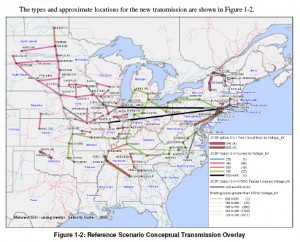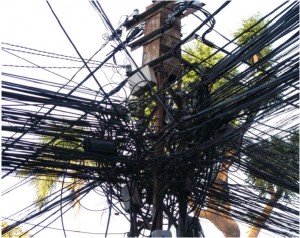National Park Service extends Comment period
March 5th, 2010
National Park Service has extended the deadline for EIS Scoping Comments on the Susquehanna-Roseland transmission project. WHEW! Now we have until March 12 to send our comments in!
Get your clues on Comments from what they do and do not include:
It’s in the Pocono Times:
From the NPS blog:
Posted March 5th, 2010 by Kurt Repanshek
High public interest has prompted the superintendents of Delaware Water Gap National Recreation Area, the Appalachian National Scenic Trail, and the Middle Delaware National Scenic and Recreational River and National Recreation Water Trail to extend by a week the public comment period on a proposal to run a transmission line across the areas.
The comment period was scheduled to end today, but has been extended through March 12.
There are numerous ways for the public to provide comments on the public scoping phase of the planning process, including leaving a message on the Park Planning Information Telephone Line (570-426-2491), submitting comments online through a link on the National Park Service Planning, Environment and Public Comment site, http://parkplanning.nps.gov (select Appalachian NST or Delaware Water Gap NRA), or by mailing comments to:
Detailed information about the need for the EIS and the project timeline
can be found on the National Park Service Planning, Environment and Public
Comment site: http://parkplanning.nps.gov.
DUH… eastern states don’t want our transmission
March 5th, 2010
Repeat after me… EASTERN STATES DON’T WANT OUR MIDWEST TRANSMISSION.
Once more with feeling… EASTERN STATES DON’T WANT OUR MIDWEST TRANSMISSION!!!
And they don’t give a rodent’s rump what we do with our transmission but THEY DO NOT WANT TO PAY FOR IT!
It’s not anything new, but it seems that the message is getting through all the way to Iowa. Soon Minnesota? The message? That the east coast does not want Midwest transmission, that they have their own renewables and not only that, they know that transmission from the Midwest means coal and, most importantly, THEY WILL NOT PAY FOR TRANSMISSION FOISTED UPON THEM.
The 7th Circuit case tossing out PJM’s cost apportionment scheme must be having an impact because everyone is freakin’ about cost allocation. Again, GOOD! The court said that PJM could not shove the costs of transmission on those who do not benefit from it:
Enter the Coalition for Fair Transmission Policy, just launched today with a press conference in Washington, D.C.
Dig this from their site:
HA! I love it when that happens…
Here’s some background on our Midwest Transmission — transmission we don’t need and they don’t want:
This opposition to Midwest transmission is nothing new, I’ve entered documentation in the record in a couple of proceedings now, but what is new is that as of today’s “launch,” there’s now an industry group advocating against Midwest transmission, and that’s one utility interest I’m glad to see hopping mad as hell and not going to take it anymore! GOOD! Maybe that will help stop this stupid transmission-fest across the Midwest.
PUC Chair David Boyd had it right when he testified before Minnesota’s Legislative Energy Commission and led off with, “We need a business plan.” Yes, that’s true, there is no business plan, and there is no MARKET for transmission. I just hope that message gets through before “we” build and WE have to pay for all these wires in the air!
Here are a few recent posts of mine on this, followed by today’s article in the Des Moines Register.
And today’s Des Moines Register article:
By DAN PILLER • dpiller@dmreg.com • March 5, 2010
Alliant Energy has its objections
But as wind energy becomes bigger and more corporate, the utility industry is divided even in Iowa.
Other states have their own plans
While Iowa has speckled its countryside with wind turbines, other states have similar aspirations.
Atlantic seaboard states advanced plans for offshore wind farms, which they say would eliminate the need to ship wind-generated electricity from Iowa.
Read the rest of this entry »
And now for a brief interlude…
March 5th, 2010
Demand so low PJM cancels RPM auction
March 2nd, 2010
Demand is down, down, down, though PJM is going to make us wait until March 11 to see the 2009 State of the Market Report for the full year… boooooooo-hisssssssssssssssssss.
But this little snippet did show up in a web update list:
Sent: Thur 02.04.2010 1:01 p.m.
Subject: 2011/2012 Second Incremental Auction CancelledPlease direct any questions to the RPM Hotline at rpm_hotline@pjm.com.
So the good news is that PJM is now admitting that “the 2010 RTP peak load forecast for the 2011/2012 Delivery Year is lower than the peak load forecast used in the 2011/2012 Base Residual Auction.” The bad news is that with the RPM auction canceled we will not have new numbers for energy efficiency and Semand Side Management, all those things that they are saying cannot possibly do the job that their planned pet transmission projects can. Funny how that works. And this is the kind of thing that needs to be very, very public — demand is so far down that it’s lower than their forecast used! hee hee hee hee
I love it when the market decides!
PJM State of Market release 3/11
March 1st, 2010
This is one of those reports that I’m really looking forward to…




